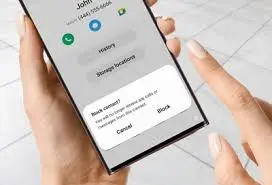In today’s digital age, it seems odd that blocked numbers can still leave voicemail messages. After all, blocking a number is meant to prevent any form of communication from that caller. So why is it that blocked numbers can still leave voicemail?
Technicalities
While it may seem counterintuitive, the fact that blocked numbers can still leave voicemail messages is rooted in the technicalities of how voicemail systems operate. When a caller is blocked, their calls are typically redirected to a separate voicemail box specifically for blocked numbers.
The process works like this: when a blocked number attempts to call, the phone system recognizes the caller ID and identifies it as blocked.
This feature has been implemented to provide a balanced approach to blocking unwanted callers while still allowing the option for them to leave voicemail messages.
Behind Reason
Allowing blocked numbers to leave voicemail messages serves a few key purposes. Firstly, it allows individuals to maintain a record of communication from blocked callers.
Additionally, by allowing blocked numbers to leave voicemail, it ensures that important messages from known or legitimate callers are not missed. There may be instances where we have to block a number temporarily but still need to receive important messages from them.
Furthermore, some individuals may choose to block numbers to prevent unwanted calls, but still have a desire or obligation to receive important information.
The potential risks
here are potential risks and challenges to consider when blocking all voicemails. One challenge is the possibility of missing important information from unknown or legitimate callers. By blocking all voicemails, there is a risk of overlooking these important messages and potentially facing consequences.
Another challenge is the inability to review and analyze voicemails for any relevant information or evidence. It is important to weigh the benefits of blocking voicemails against the potential drawbacks to ensure a balanced approach to managing unwanted callers.
Management
While it may not be possible to completely prevent blocked numbers from leaving voicemails, there are strategies you can use to manage and control these messages. Here are some suggestions:
1. Regularly check your blocked voicemail folder:
Most smartphones have a separate folder for blocked or restricted voicemails. Make it a habit to review this folder periodically to ensure you haven’t missed any important messages from blocked numbers.
2. Use a third-party app or service:
There are several apps and services available that offer advanced call blocking and voicemail management features. These tools allow you to filter and categorize voicemails, giving you more control over which messages you listen to and which ones you ignore.
3. Consider unblocking known and trusted numbers:
If you find that you frequently receive calls from a particular number that you have blocked, you may want to reassess whether it should remain blocked. Unblocking trusted numbers can ensure that you don’t miss any critical information or opportunities.
4. Set up custom voicemail greetings:
Another option is to create a custom voicemail greeting specifically for blocked numbers. In this message, you can politely explain that the call has been blocked and provide alternate means of contacting you if necessary.
Conclusion
There are strategies you can employ to manage and control these messages. By regularly checking your blocked voicemail folder, using third-party apps or services.
Remember, it’s essential to prioritize your privacy and protect yourself from unwanted callers. However, it’s also crucial not to miss important messages or opportunities that may come from blocked numbers.
So take the time to review your voicemail settings and explore the options available to you. By finding the right balance for your needs, you can have a more streamlined and hassle-free communication experience.

